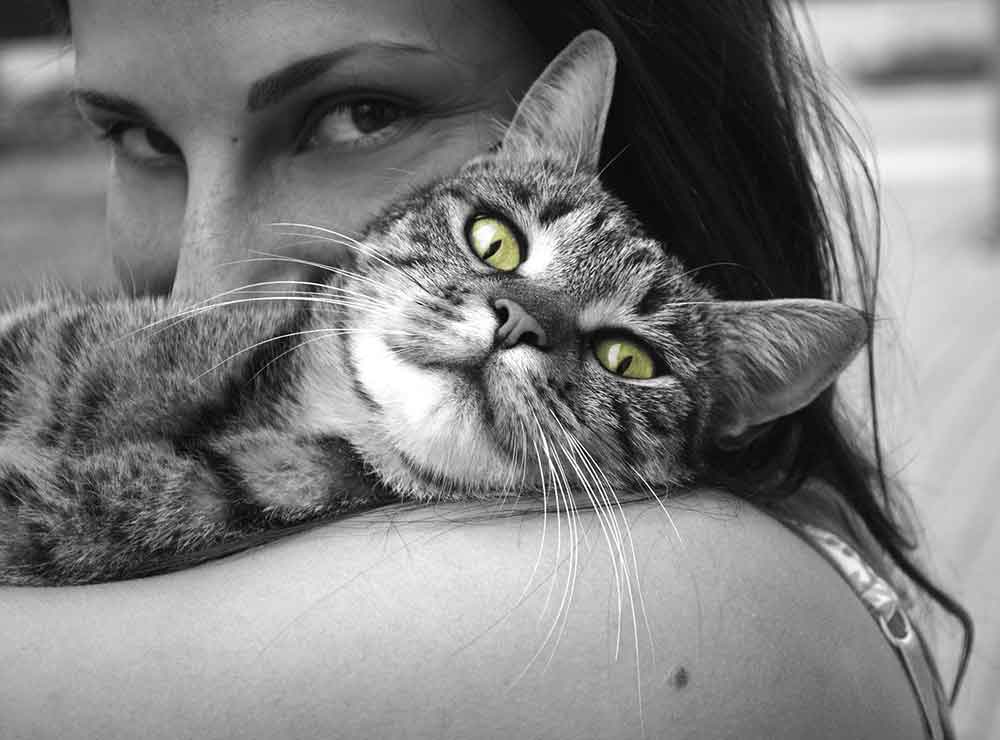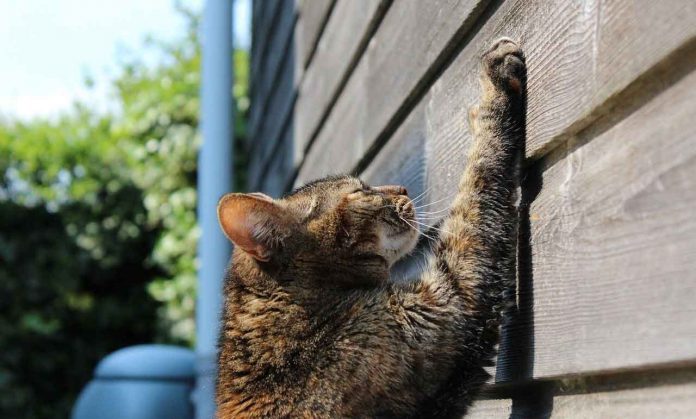There is no doubt that cats are great companions: elegant, playful and intelligent. However, sometimes there can be situations that confuse us and break the harmony in our coexistence with our feline friends. One of those situations that can dislodge us and be annoying is the marking inside the house.
First, you may be wondering why cats need to mark, even when neutered. Well, this behavior is due to the fact that cats are very territorial animals, because despite being predators, they are also vulnerable to other animals or to possible “intruders” of their own species, leaving thus olfactory and visual marks, delimiting their territory and creating a safe place where they feel safe. They also provide information on their age, gender, health, timing of the reproductive cycle, etc. Continue reading this article from Pets Feed to find practical solutions when a sterilized cat continues to mark.
If I sterilize my cat, will it stop marking?
There are three forms of marking in cats: the face, urine and nails.
Sterilization generally corrects between 53% and 78% of cases of urine marking in males. In females, if it is due to thermal marking, it usually disappears completely, not disappearing if the underlying cause is different.
Face and nail marking does not respond to sterilization. All these data must be taken into account when deciding whether to sterilize our cat and clarify any doubts about it with our veterinarian, marking realistic expectations of what castration implies.
Then we will go over the three types of marking with more details and some practical tips to avoid them as much as possible when they are a problem.

1. Facial marking
It consists of rubbing the sides of the neck with vertical objects or with other animals or people. This behavior leaves an olfactory mark that the cat considers to be its safe zone and helps to reduce the stress associated with the changes. It is generally a sign that he is comfortable and that he is “at home”. Normally, this does not cause rejection by the owner, on the contrary, it is a sign of affection and confidence.
2. Urine marking
It is undoubtedly the one that worries the owners most often and even on occasion, it is a reason for consultation and abandonment in the worst case. To start, it is very important to know how to differentiate when our cat has a marking behavior and when it is due to a pathological process.
When a cat marks with urine, it sprays urine on vertical surfaces, lifting its tail. He usually does them all over the house and continues to defecate inside the sandbox or outside if he leaves the house (stool marking is very rare). When the cat is whole (without sterilization), labeling is much more frequent and the smell of urine is much stronger, due to the presence in a large amount of a substance called felinin.
In case of urinary tract diseases (the most common is cystitis or inflammation of the bladder), urination is usually done on horizontal surfaces and the animal is usually small and often (dysuria), even showing signs of pain (stranguria) and sometimes urine with blood (hematuria). In case of aversion to the sandbox, he usually urinates nearby but outside and in normal quantity, and usually defecates outside.

If we suspect that the behavior, he is showing may be due to a health problem, it is important to contact the veterinarian to explore it. Especially in males, it can be severe and must act quickly (in addition, in sterilized and overweight cats, it is more common for lower urinary tract problems).
When the marking persists after castration, it is generally linked to stress problems, being more frequent in houses with several cats. Likewise, lower urinary tract diseases can be caused by infectious causes, but most are also triggered by situations of chronic stress.
Therefore, the advice we will give you will be particularly aimed at minimizing stress in our cats:
Environmental enrichment: this is important especially for indoor cats, and it will take time to play with them, provide them with appropriate toys, raised places where they can control their territory. , platforms near windows so they can look outside, resting places and enough feeders for all cats in the house, water fountains or places to hide if they need.
Toilet: the sandbox is recommended to be away from the area where the cat rests and eats. We must pay attention to hygiene and avoid frequently changing the type of substrate and the type of tray. It must be big enough for the cat to turn on itself and there should be a plateau ratio of n + 1 compared to the number of cats we have. You should also try to place them in a quiet place and, if possible, this is not a usual passage area.
Cleaning the marked area: it is recommended to clean the area with an enzymatic detergent and once clean, dry it well and wipe it with a cloth of surgical alcohol. Finally, it is very useful to use a soothing synthetic feline pheromone spray, spraying it above the marked surface. In this way, the cat will already consider that it has marked this place and will no longer urinate. We will avoid using strong odor cleaning products like bleach or ammonia.
NEVER quarrel, let alone attack our animal for urinating. They don’t do it as revenge if not as a way to deal with the anxiety they suffer from and if we act aggressively, we would only make the situation worse.
If we anticipate that there will be a major change in the home: the arrival of a new animal, a baby, reforms, moves, etc., we must try to make this change as gradually as possible and we can help again with the use of synthetic pheromones, either in spray or in diffuser so that the cat still feels on its territory and calmer. It can also help rub his neck with a cloth and rub it with new furniture, a new home, a baby bed, etc. And it is important not to force him to meet new members or strangers if he is afraid and hides, he must respect his space.
3. Nail marking
In this case, it is also necessary to differentiate the case of the marking with that of the filing and the wear of the nails and the exercise of the claws. When the cat wears the nails, it usually does so by standing straight on a vertical surface, scratching the surface and stretching the back. They often use tree trunks if they are outside or scrapers and / or furniture if they are inside the house. In this case, they usually choose the same sites. It is a physiological behavior and necessary for the mental and physical health of our cats.
When marking, they generally do it throughout the house, choosing strategic places such as door and window frames, walls … this type of marking leaves a visual mark with stripes and olfactory by the sweat glands present in the plantar pads, notifying the other members of the same species of the limits of their territory.

To avoid scratching our furniture and making it easier to use the scraper, here are some tips:
Scraper: it must be robust, stable and high enough for the cat to lengthen its back. It is recommended to place it near its resting place. If we see that he is using a piece of furniture, such as the foot of a table or the sofa, we will place it next to him and each time the cat tries to scratch it, we will take it gently and without scolding him on the scraper and gently rub its paws on it, so that it learns that it is there that it will have to sharpen its nails.
We can use a catnip spray to stimulate him to go towards his scraper. Never spray pheromones on the scraper, as the cat will avoid scratching it when it is considered “marked”.
In multi-cat homes, we will take into account environmental enrichment and the advice we gave in the previous section to prevent them from marking the competition.
As in the case of urine, we will clean the area in the same way and spray pheromones at the end.
If we see that the cat is scratching the frames of doors and windows, control the access of possible strange cats to the house. A good option may be the implantation of magnetic catheters.
If our kitten is still young, it is important to get it used to new situations, new people, other pets, etc. so that in adulthood he is not as sensitive to stressful situations. If our cat is already adult and we find that the marking and other signs of anxiety are exacerbated, its quality of life has decreased and we are not able to manage it, we must put it in the hands of a veterinarian specializing in clinical ethology to assess the case.


